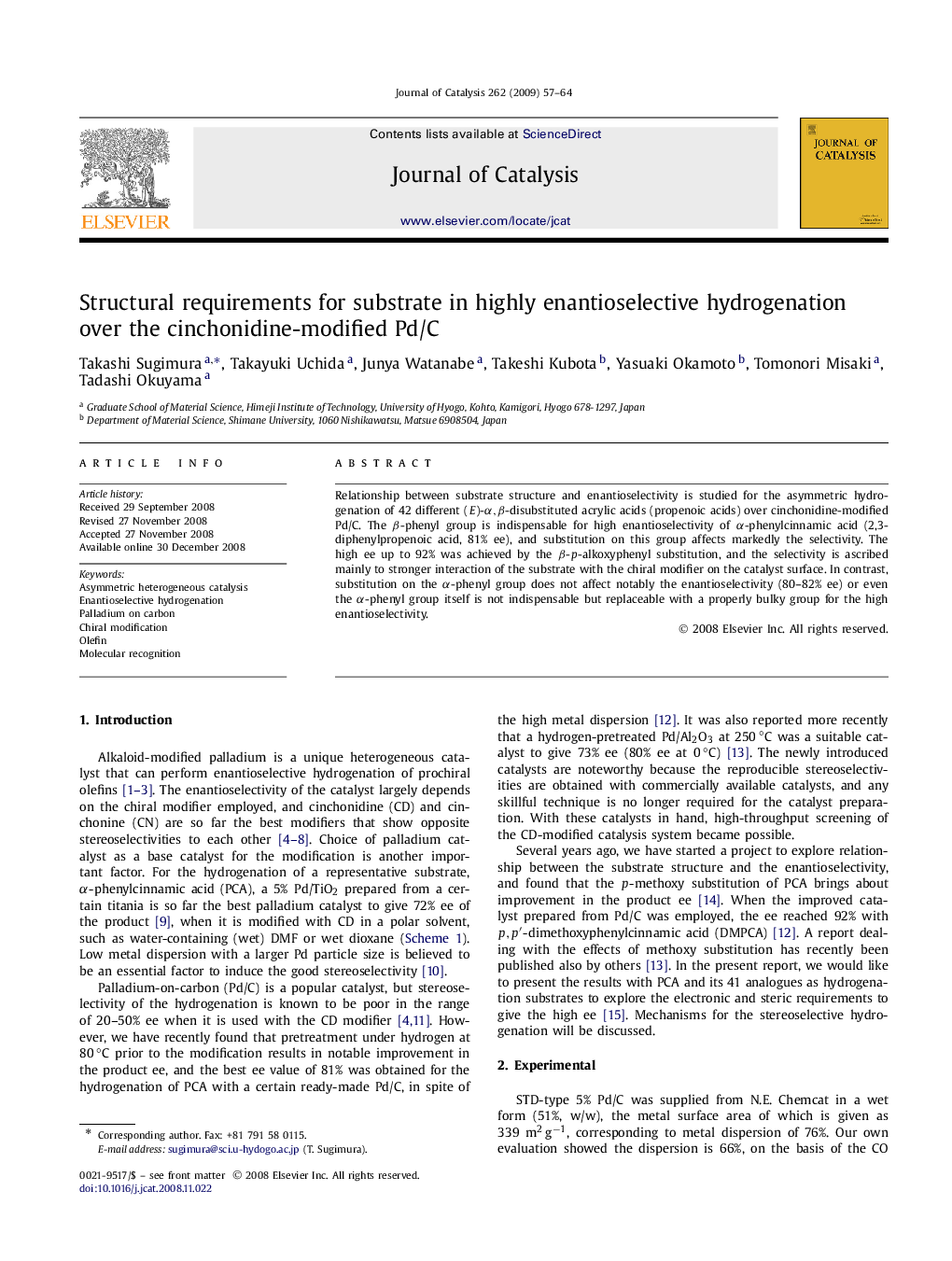| Article ID | Journal | Published Year | Pages | File Type |
|---|---|---|---|---|
| 62242 | Journal of Catalysis | 2009 | 8 Pages |
Relationship between substrate structure and enantioselectivity is studied for the asymmetric hydrogenation of 42 different (E )-α,βα,β-disubstituted acrylic acids (propenoic acids) over cinchonidine-modified Pd/C. The β-phenyl group is indispensable for high enantioselectivity of α -phenylcinnamic acid (2,3-diphenylpropenoic acid, 81% ee), and substitution on this group affects markedly the selectivity. The high ee up to 92% was achieved by the β-pβ-p-alkoxyphenyl substitution, and the selectivity is ascribed mainly to stronger interaction of the substrate with the chiral modifier on the catalyst surface. In contrast, substitution on the α-phenyl group does not affect notably the enantioselectivity (80–82% ee) or even the α-phenyl group itself is not indispensable but replaceable with a properly bulky group for the high enantioselectivity.
Graphical abstractRelationship between substrate structure and enantioselectivity was studied with 42 different (E )-α,βα,β-disubstituted acrylic acids for the hydrogenation over cinchonidine-modified Pd/C. The high ee was achieved with the β-pβ-p-alkoxyphenyl analogues.Figure optionsDownload full-size imageDownload high-quality image (41 K)Download as PowerPoint slide
